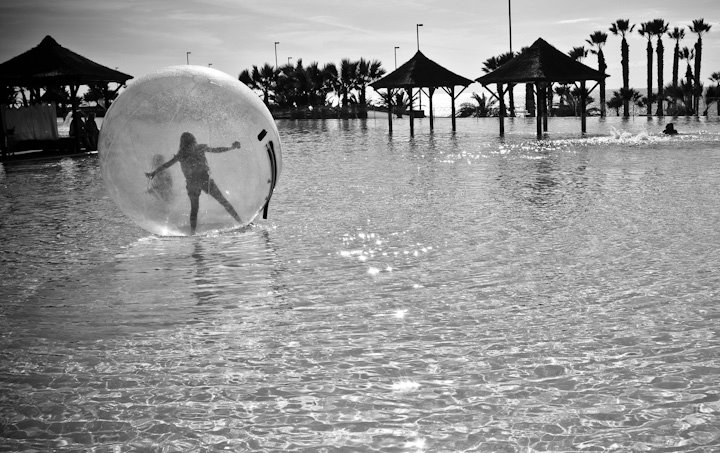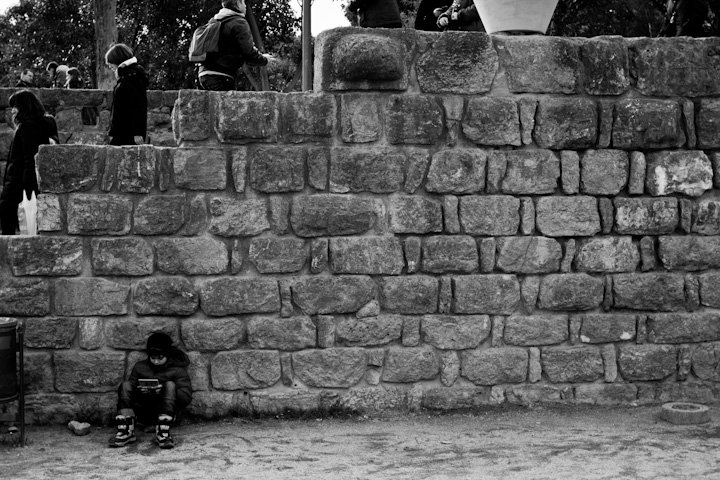In these series I hope to introduce some of the most compelling street (and non-street) photographers who have inspired me to start or keep shooting. The double entendre is that Street photographers tend to experiment with and work with available light (which tend to be shadows), and also tend to stay hidden out of “popular” photographers (dominated by studio photographers, landscape photographers, etc). I hope that you will enjoy discovering these hidden talents as much as I do. Remember, there is always a street photographer near you, somewhere…
—

Today I am pleased to introduce to you SH Roh from South Korea. A designer and full-time photographer, SH Roh works in Korea as a full-time designer and photographer-for-hire. I am constantly inspired by his photography of special events and settings– for he has a unique eye for subjects and unusual lighting, especially in concerts, musicals, and other events for which he is hired. He has mastered both extremely dark, grave photos but portray equally well bright subjects. I always see his Nike+ running feeds (Today I ran X miles…) and am convinced he is secretly preparing for a triathlon.

SH Roh has held numerous exhibits in the last few years, each with a special theme and unique purpose. He has recently experimented with overlaying text on top of photos– an unusual inclusion in the post-processing world. Whether he is on a new project with his Nikon D3, shooting in the streets with his Fuji X100, or sharing a picture of his latest meal, this photographer is certainly one to follow. I recently had the pleasure of interviewing this humble photographer, and hope you will enjoy his works as much as I do.

Q. Can you tell me more about yourself?
A. Hello. I am Roh Sh, a photographer. I majored not in photography, but in Korean language and literature. I am currently working full-time as both a designer and a photographer. I especially like capturing photos of musicians, and am also involved in design in the same area.

Q. When did you start taking photos?
A. I began when I was very young. I happened to chance upon a film camera, and I’ve taken pictures ever since.

Q. Can you tell me what your shooting style is like?
A. It’s a bit difficulty to narrow down my shooting style to just one style. However, when I am working, I hope that people can hear the music in my photos. Rather than a still picture, I like motion in my photos– that’s probably how I describe my own style.

Q. What equipment/gear do you use (camera, lens, flash, tripod, etc.)?
A. Normally these days, I tend to bring along my Fujifilm X100, and for special events (photographing musicians or need a special lens for the setting I will be shooting in) I use my Nikon D3. Lenses change depending on the situation.

Q. Your photos tend to be very dark (both in exposure and subject). Is there a special reason for this?
A. I don’t try to capture a specific emotion of any sort, but I used to try and incorporate sad memories– parting with a person whom I admire, or parting ways with a loved one– so I unintentionally end up incorporating these feelings into my photos and essays.

Q. Do you feel there is a big difference when you take pictures for a job, versus for enjoyment (i.e. street photography)? What specifically makes it different for you?
A. I think even within a “job” photo, there needs to be further categorization. For a client-based photography job (ad photo or commercial photo, including performances), the client usually wants to blend my characteristic style of color and traits into their subject. Other than that, I don’t realize a specific difference between my jobs versus my so-called photography for enjoyment. The reason for this is, photography is about the study of the subject and its reinterpretation. And if you put those together, that’s an exhibition. That’s why I try to find subjects in my “leisure” photos (snapshots) and reinterpret them, so if we have to find a difference between them I guess it’s a difference in the depth of the photos.

Q. You take a lot of photos of musicians, how is it different from just normal snapshots? What inspires you to take their photos?
A. To take a musician’s photo, you need to draw out their unique characteristics. Especially during concerts, there are moments that will repeat themselves so I can never let my guard down and get absorbed into the shoot. It seems obvious, but I tend to listen to the artist’s works tens, if not hundreds of times before I go into a photo shoot. I want to find the right timing in the beat of the music and find myself the shot I need, and usually is the key to getting results I can be proud of. I love music, and I coincidentally was hired to take photos of the Jarasum International Jazz Festival– and that’s where I started. Rather than trying to subtly portray the music I try to get energetic and vibrant shots, and through that I’ve discovered more musicians both directly and indirectly, which has allowed me to expand my career further into the musician’s realm.


Q. I know you recently held an exhibition. What was it about?
A. For my first exhibition in 2012, I held an exhibition called “Great Expectations” for a month in the Modern Art Museum (inside of Hongik University). One of the reasons I prepared this exhibition was that although I’d used many subjects and had held many exhibitions, I’d never used the Pansori (Korean musical performance) as a subject. I wanted to add the fleeting aspect of photography with the theme of continuity, and went to visit the Pansori performers themselves. Then I received the lyrics for the performance and engraved the lyrics on with gilt (gold leaves). Many visited, and I received feedback saying that it was a very meaningful exhibition. I was fortunate enough to be called back by the Jeonju World Sound Festival for an extended exhibition.

Q. What’s your advice for newly aspiring photographers?
A. Many ask “how do you take good pictures”– I get that question a lot too. That’s when I suggest– take many photos! This doesn’t mean take more for the sake of taking more and increasing your shutter count, but rather cherish each picture you take along with the experience and unique subjects brought by it. In addition there are a lot of “Photoshop retouching” books that are released by the waves these days, but I suggest instead find a photographer you like and buy their photo book– and imitate them. I think that will be a better way to study and improve your photography.
You can see more of SH Roh’s works at www.rohsh.com, and follow him on twitter @rohsh.
As always, Like me on Facebook (near the top of the article too!) or follow me on Twitter for the latest updates! A comment is also much appreciated, sir or madam. A coffee for thee (or cookie, if thou prefers) shall be in order when we meet.
&&Phil










































